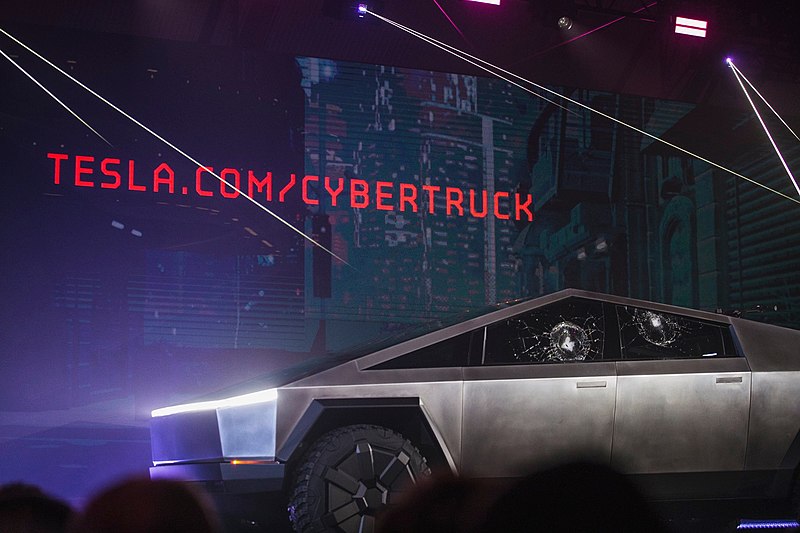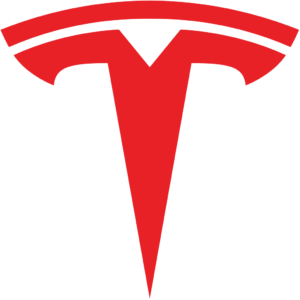Currently (April, 2020) Tesla reportedly has some 622,000 orders for their innovatively designed and futuristically styled Cybertruck. Even if 20% of this order backlog evaporates, that’s 498,000 vehicles – two years of high-volume two-shift production, and for the sake of discussion, roughly $24.9 billion dollars in revenue for Tesla at $50,000 per vehicle.
Given the extraordinary global success of Tesla’s Model 3, and with Elon Musk, Tesla’s CEO, expecting the newly announced Model Y to outsell the Model 3, Tesla only has a couple of problems associated with their Cybertruck: they currently have no plant (or even a location for a plant) in which to produce them, and they don’t have enough batteries available given their existing production needs (and Tesla’s desire to get their new Class 8 Semis — with even higher battery quantity demand! — on the road).
Tesla has a good stash of cash at this point, and while not knowing the full effects of the current Coronavirus challenge, both of those problems appear to be solvable within 18 months, especially in Muskworld. Hopefully, Tesla’s new Cybertruck plant will be here near Austin, TX. Another 10,000 jobs for Austin and Texas.
If Tesla’s current Cybertruck order backlog isn’t enough to marvel at, I believe it’s just a few nuggets at the entrance to the gold mine. Let’s consider some examples of further Cybertruck demand.
I believe it is likely that most police forces in America will replace the majority of their Dodge Chargers and Ford and Chevy SUVs with Cybertrucks. Why? Consider well thought out and engineered product design features and impressive customer benefits that total what no other truck in the US market offers. Let me count the ways:
- A rustproof body impervious to salt and road chemicals dumped on state roads that incur snow and ice, in addition to the vehicle – both glass and stainless-steel bodywork – being seemingly impervious to stones, bullets, and minor dents
- Obscenely fast performance with superb handling
- Go-anywhere-in-any-weather capability (depending on tire choice) with an armored underbelly and up to 16 inches of ground clearance (handy for flooded or snow-covered streets)
- A comfortable ride based on an active air suspension, four-wheel independent suspension with about fourteen inches of travel for each wheel, an adjustable ride height of up to 8 inches of total travel, and vehicle levelling depending on load weight
- A towing capacity of up to 14,000 pounds (with the three-motor option)
- Operating and maintenance costs roughly 25% of current ICE-powered police fleet vehicles
- A body that can be quickly and inexpensively wrapped with any color and logo design each police department desires.
- Roomy interior – comfortable seating for 5 or even 6 in a pinch
- Lockable covered bed with a load capacity of 3,500 pounds
- Built in “generator” – i.e., the vehicle’s battery powering both 120 and 240 volt AC outlets
- Built in air compressor
- Cybertruck prices range from $39,900 (1 rear motor, 7,500 pound tow limit, 250 mile range), to $49,900 (two motors, 10,000 pound tow limit, 300 mile range), and $69,900 (three motors, 14,000 pound tow limit, 500 mile range) – far less than similarly designed and equipped (if they were available) pickups from traditional US light or even medium duty truck manufacturers
- As with all Tesla vehicles, the Cybertruck comes with Tesla’s over-the-air (OTA) software updates. These periodic updates will regularly enhance the safety, utility, entertainment factor, and value of Cybertrucks. Unlike virtually all other brands of vehicles, these software updates, at a minimum, slow the depreciation rate of Teslas, and many predict may actually cause the value of any Tesla to appreciate with time to some degree! Teslas are computers on wheels that, like cellphones, can be continuously updated with new features and benefits, as opposed to traditional motor vehicles.
In short, if you are a “truck guy or gal”, what’s not to like about Tesla’s Cybertruck?
With such law enforcement demand, it’s possible that Tesla would offer an integrated police radio-computer package to go with its current software display and vehicle management system.
Police forces have been experimenting with electric vehicles in many areas of the world. In the US, police forces in cities such as Seattle, LA, Denver and others have been driving increasing numbers of electric vehicles for years, enjoying significant benefits. Gloucester County’s police force in the UK currently has a fleet of 65 Nissan Leafs and 9 vans, comprising 21% of their vehicles. They have installed 87 charge points in 16 locations throughout the county. Last year they saved 138,000 UK Pounds on “fueling” charges and significantly reduced their carbon emissions by their substitution of battery-powered police vehicles for ICE-engined units.
A quick look reveals that there are some 500,000 police vehicles currently in US operation. 500,000, or even if others such as Rivian eventually capture some market share, 400,000 times an average of $50,000 per Cybertruck is another $20 billion in Tesla’s coffers over the next five to ten years!
It is also quite probable that for the same reasons listed above, during the next few years Tesla’s Cybertruck will rapidly capture a significant share of the following pickup truck/SUV markets:
- Military
- Border patrol
- Park/forest service
- State, county, and local cities/towns’ fleets
- Limousine services
A limousine company owner whom I talked with at Austin’s Fully Charged event held at COTA at the end of January 2020 told me that he had eight Cybertrucks on order and would take them all that day if available. He noted that if you put street tires on them and with all their camera and radar systems, Autopilot features, integrated vehicle management software, and with a lockable protective over the bed they will make superb limos that clients will be eager to ride in.
In all the police and other organizations listed above, economics will play a huge role in adding sales in Tesla’s column. Each of those organizations have pressing budget constraints and are constantly looking for less expensive and longer-lived assets as well as for ways to save operating and maintenance expenses. They will be eager to take those Tesla-generated savings and use them elsewhere.
What other auto/light truck manufacturer has a backlog of two year’s plus high-volume two-shift production of vehicles? All these Cybertruck sales or potential sales were realized without Tesla spending the $3 billion plus in advertising and a similar amount on sales incentives that GM alone, for instance, spends annually.
All these Cybertruck sales are based on actual customer demand pull, not the outmoded push-to-the-dealer Detroit system — one loaded with sales incentives and that forces dealers though the old and despised “turn and earn” model. The current traditional incentive system has become so cumbersome and complicated that Detroit manufacturers are now resorting to assigning sales incentives by specific days and sometimes even for specific vehicle VIN numbers. Their dealers, as well as potential customers, can’t keep up with this perversion of automotive commerce!
Tesla’s Cybertruck will carve a huge chunk right out of traditional US light truck manufacturers’ volume and profits. For years, trucks have been responsible for a majority, if not occasionally all, of GM’s, Ford’s, and FCA’s profits. Tesla’s market inroads with their Cybertruck will further cripple these three companies, each of whom are already burdened with huge capital requirements to retool for electric vehicles, large debt loads, significant unfunded pension liabilities, and low market caps.
Looks like Tesla is going to have to save a couple of Cybertrucks to haul away their golden market results!
Featured image via Wikimedia Commons
Your feedback in the form of comments or suggestions are welcome in the comment window. Thank you for following my blogs on this site and for participating in my blogging community.




